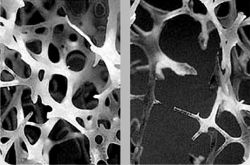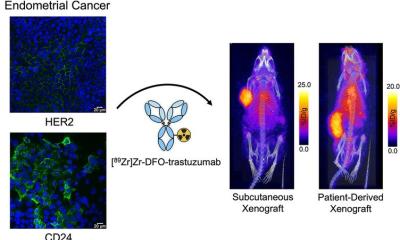Fracture risk prediction osteoporosis patients
Simple clinical measurements raise hope of targeted treatments for those at highest risk. The future risk of osteoporotic fracture can be predicted with 75% accuracy using a new mathematical formula, according to research published in the October issue of Radiology (RSNA.org).

Using the formula physicians to tailor treatment plans for women who have different levels of bone mineral density throughout their bodies e.g. HRT, non-hormonal medicines, vitamin D and calcium supplements, and additional therapies such as calcitriol - an active form of vitamin D).
The study’s lead author, Dr Margaret Joy Henry statistician in the Department of Clinical and Biomedical Sciences Department, University of Melbourne, Australia, points out that about 45% of women have different levels of bone mineral density between hip and spine, which causes uncertainty as to how physicians should assess their future fracture risk. She adds that two years after the initial measurements of women with osteoporosis were taken, the equation successfully predicted 75% of the fractures that occurred.
The equation developed by the Melbourne team considers not only bone mineral density, but also various other risk factors. A patient’s likelihood of falling, low bone mass, excess or low body weight and additional factors are combined into a single formula that can indicate to a physician level of a woman’s fracture risk, and treatment strategies might then be targeted.
The study involved 231 elderly women who had sustained a low-trauma fracture of the hip, spine, humerus or forearm during a two-year period, and 448 randomly selected elderly women who had not sustained a fracture during the same two-year period. Based on measurements obtained from these groups, the equation was developed, and it was then tested in a third group of randomly selected women from the community, who were to be followed for a six-year period to determine the formula’s success for fracture prediction.
Along with the 75% success rate, the authors also discovered that heavier body weight seemed to increase the force applied to the skeleton during a fall. Findings of most previous studies indicated that lighter body weight led to increased risk of fracture, due to lower bone mass.
Dr. Henry and colleagues are now assessing risk factors in a large cohort of men.
Ref: Pub: Radiological Society of North America, Inc. (RSNA.org/radiologyjnl)Fracture Risk (FRISK) Score: Geelong Osteoporosis Study. MJ Henry BSc(Hons)PhD; J A Pasco BSc(Hons) PhD; K M Sanders M.Nutrition PhD; G C Nicholson MBBS PhD FRACP FRCP, and Mark Anthony Kotowicz MBBS FRACP.
17.11.2006











